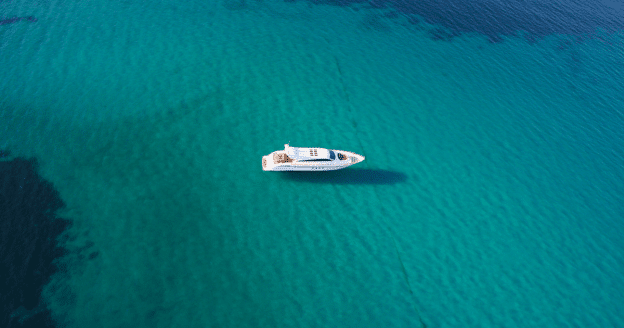It happens to many people at some point or another: the engine dies while you are well away from the shore. You never know when it will happen to you. However, at the very least, you can prepare by knowing how to make distress calls at sea, just in case it does happen to you. Here is what to do when your boat breaks down.
Use Your Ship’s VHF Marine Radio to Make Distress Calls at Sea
Your immediate instinct may be to call for help, but calling 911 on your cell phone might not work if you are far from land. That is why we urge you to equip your vessel with a very high frequency (VHF) marine radio. Not only will you have a much better signal, but the Coast Guard can track that signal to find you. This might be the most important thing you can have on your ship.
Of course, you should not just wait for anyone to look for you. Send that signal out by calling Channel 16, which is reserved for distress calls and continuously monitored by the Coast Guard. There is a specific format that your call needs to follow:
- Say “Mayday” three times
- Then, say “This is,” then the name of your ship three times and your call sign once
- Say “Mayday” one more time, then repeat the name of your ship once
- Give any information regarding your position, including latitude and longitude, bearing, and any landmarks nearby
- Describe your emergency and the assistance you need
- Give the number of people on the ship
- Any other information that might be important (whether anyone is hurt, what the ship looks like, how long the emergency has been going on)
- Say “Over”
Once you say this, you need to wait for a response, whether from the Coast Guard or any other ships in the area that might be able to help. If no one answers within a short period, try again, with the same format as above.
Make Yourself Visible to Other Ships With Visual Distress Signals
You might need to get assistance from another boat while you are out there. To do that, you will need a way to get their attention. That is where visual distress signals come in handy. The Coast Guard, through 33 CFR 171, legally requires ships at least sixteen feet long or carrying less than seven passengers to have some onboard. At least one tool should work in daytime, and at least one should work at night. You could always get one that works for both!
Coast Guard-approved signals include:
- Electric distress light
- Orange flag
- Orange smoke, either handheld or floating (floating smoke only works for daytime)
- Red flares, either handheld, parachute, or rocket-propelled parachute
- Red pyrotechnic flares
Knowing how to make distress calls at sea is vital for anyone who plans to go yachting or sailing in the Miami, FL area. Hopefully, this information helps you get prepared for the next time you get into the water. In the meantime, do not let an overabundance of caution keep you from having a good time! Go cruising in style (and with all the proper safety features) and rent a yacht for a day (or even a week!) with The Advantaged Yacht Charters.


 Book a Yacht Charter
Book a Yacht Charter